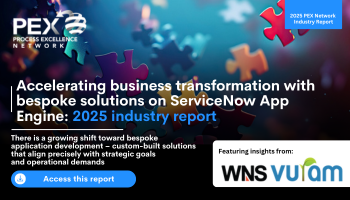How Alcon pushes the boundaries of operational excellence
Luis Estrada, Alcon’s transformation and continuous improvement director for international commercial, explains how to cultivate continuous improvement skillsets across multiple functions and geographies
Add bookmark
As part of a large-scale business transformation aimed at increasing efficiency and organizational agility across its global operations, eye care company, Alcon, sought to cultivate continuous improvement mindsets across its international commercial organization. The goal was to equip business units such as sales and marketing with the skills necessary to proactively drive operational excellence within their own teams.
To shed light on how Alcon successfully scaled continuous improvement skillsets across its global operations, we spoke with Luis Estrada, Alcon’s transformation and continuous improvement director for international commercial. Below he outlines how his team successfully envisioned, launched and grew Alcon’s continuous improvement (CI) capability.
Join the PEX Network community

Don't miss any news, updates or insider tips from PEX Network by getting them delivered to your inbox. Sign up to our newsletter and join our community of experts.
Learn MorePEX Network: To set context, could you tell us about Alcon’s operational excellence program?
Luis Estrada: For the first years of our existence, the operational excellence function focused on manufacturing processes. Over time, senior leaders recognized the opportunity to grow the continuous improvement mindset and skills beyond manufacturing. We are truly fortunate that the organization sees the strategic importance of continuous improvement in all aspects of what we do.
Our CI program, Simplifeye, focuses on addressing the company’s top process improvement opportunities, developing the CI skills across the organization and sustaining the engagement of those previously certified.
PEX Network: As part of this transformation, your team upskilled commercial functions (i.e. sales, marketing, etc.) with process excellence skills. Could you tell us about this project?
LE: We believe in involving and empowering our associates to improve processes. In 2022, we launched the continuous improvement program in our International Commercial organization. An essential element of Simplifeye was the Green Belt certification. This was not just training but a structured certification program. Before joining, participants were expected to select an improvement project and have it approved. Then they received the training and coaching needed to complete the project and deliver results.
Upon completion of the project and with evidence of improved performance, the participants were granted the Green Belt certification.
PEX Network: A big part of ensuring the success of this project was change management and cultural transformation. How did you approach those objectives?
LE: Planning and communication were essential. The continuous improvement program was included in the organizational objectives and cascaded throughout. The division’s president highlighted the program and achievements during his townhall events. We also celebrated the success stories in our internal social media platform and ensured that every associate that completed the certification was recognized for their achievement and contribution.
PEX Network: What are 3 keys to cultural transformation success?
LE: First, align your operational excellence efforts with the most important process improvement needs in the organization. Second, you have to measure and deliver results. Generate tangible evidence of improved performance to illustrate ROI. Third, operational excellence is not only about the processes or technology, it’s about the people. Developing the continuous improvement mindset across all levels of the organization is essential to success.
PEX Network: Was there a time when you confronted especially strong change resistance? If so, how did you overcome it?
LE: We did not experience strong change resistance but there were some doubts as to the anticipated benefits from the CI program given the time commitment. One way that we addressed those concerns was through Kaizen workshops. By bringing people together for a few days to brainstorm and discuss new ideas, people could take an active role in driving positive change and experience the power of these new CI initiatives first hand.
PEX Network: How do you measure cultural transformation success?
LE: We look at business results. We have seen organizations that measure success in terms of number of people trained or events facilitated. The problem with that is that those are measures of activity, not results. We focus on quantifying the value generated from each CI project and celebrating that.
There is also the aspect of ongoing engagement by previously certified associates. The evergreen element of our program establishes targets for associates to continue being involved in CI. The finish line should not be a LinkedIn profile with a certification added. There is no finish line because we are in the business of continuous improvement.
Accelerating business transformation with bespoke solutions on ServiceNow App Engine

Today, off-the-shelf software solutions offer diverse features that enable vast opportunities to implement and maintain business transformation. However, in some circumstances, capabilities lack the flexibility and specificity required to address the unique challenges and workflows of individual organizations. As a result, there is a growing shift toward bespoke application development – custom-built solutions that align precisely with strategic goals and operational demands.
Download this report to explore how enterprises can harness the power of custom applications to drive meaningful transformation. With the growing adoption of low-code platforms like ServiceNow App Engine, organizations are building custom applications faster and with greater control. By empowering both IT professionals and citizen developers to build tailored solutions, organizations can significantly reduce time to value while maintaining control over quality and compliance.
Download Now






















